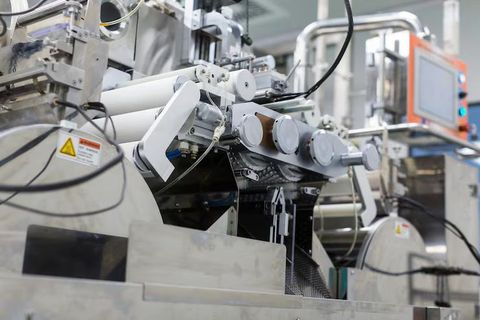
Discover Essential Facts and Information on Modern Agricultural Sustainability
Modern agricultural sustainability refers to farming systems that aim to meet today’s food and fibre needs while safeguarding natural resources, promoting social well-being, and ensuring economic viability for future generations. At its core, this concept exists because traditional high-input, expansion-focused agriculture is increasingly under strain: soils are degrading, water supplies are stressed, climate change is disrupting growing seasons, and global population growth demands more food from less land. Sustainability in agriculture therefore arises as a vital response to multiple intertwined challenges maintaining productivity while reducing environmental impact, and balancing farm livelihoods with ecosystem health.
Agricultural sustainability matters today because it is central to long-term food security, climate resilience, and economic stability.

-
Resource limits and environmental pressure: Agriculture uses the majority of global freshwater and land resources. Unsustainable practices accelerate soil erosion, biodiversity loss, and groundwater depletion.
-
Climate risk and food security: Crop yields are increasingly vulnerable to changing weather patterns, droughts, floods, and heat stress. Sustainable systems improve resilience and reduce dependency on volatile climate patterns.
-
Socio-economic impact: Farming supports millions of livelihoods, particularly in developing nations like India. Sustainable practices ensure stable incomes and healthier rural ecosystems.
-
Meeting future demand: With the global population expected to approach 9.7 billion by 2050, agriculture must produce more food from limited land and water while maintaining ecological balance.
-
Corporate and global responsibility: Governments and companies are adopting environmental, social, and governance (ESG) frameworks to promote sustainability in supply chains and resource management.
Recent Updates
Here are some of the major updates and trends in agricultural sustainability:
-
Precision agriculture and AI: Technologies like drones, remote sensors, and artificial intelligence are being used to optimize irrigation, fertilizer use, and crop monitoring. This helps reduce waste and improve yields.
-
Regenerative agriculture: Practices such as cover cropping, crop rotation, and agroforestry are being adopted to restore soil health and enhance biodiversity.
-
Digital traceability and ESG reporting: Businesses are increasingly implementing supply chain transparency tools and environmental reporting standards.
-
Nature-positive outcomes: Beyond carbon reduction, there is growing emphasis on biodiversity conservation, soil quality improvement, and maintaining healthy ecosystems.
-
Global policy outlooks: Recent international agricultural outlooks emphasize the dual challenge of improving productivity while reducing emissions through innovation and resource-efficient technologies.
| Trend | Description | Why It Matters |
|---|---|---|
| Precision & AI Farming | Use of drones, sensors, and analytics for decisions | Boosts efficiency, reduces input waste |
| Regenerative Practices | Agroforestry, cover crops, soil carbon storage | Enhances soil fertility, sequesters carbon |
| Nature-Positive Agriculture | Focus on biodiversity and ecosystem health | Protects long-term sustainability |
| Digital Traceability | Tracking farm-to-market operations | Builds trust and accountability |
| Policy Alignment | Coordinating agricultural and climate targets | Supports national sustainability goals |
Laws or Policies
In India, agricultural sustainability is supported by several government missions and frameworks:
-
National Mission for Sustainable Agriculture (NMSA): Focuses on improving productivity in rain-fed areas, promoting integrated farming systems, soil health, and climate-resilient technologies.
-
Pradhan Mantri Krishi Sinchai Yojana (PMKSY): Aims to improve irrigation efficiency and ensure every farm has access to water through micro-irrigation and watershed management.
-
Soil Health Card Scheme: Provides farmers with soil testing results and recommendations for optimal nutrient use, reducing fertilizer misuse.
-
National Programme on Organic Farming: Encourages environmentally responsible practices through organic and natural farming systems.
-
Agroecology and Policy Reforms: Current policy debates highlight the need to better align agricultural productivity goals with environmental conservation and climate adaptation strategies.
These frameworks influence how sustainability principles are implemented in Indian agriculture, shaping farmer incentives, irrigation norms, and land-use strategies.
Tools and Resources
Here are practical tools and resources useful for promoting agricultural sustainability:
-
Digital Agriculture Platforms: Tools that monitor soil health, irrigation levels, and crop conditions through remote sensing and AI.
-
Sustainability Calculators: Software that estimates carbon footprint, water use, and soil fertility improvements for different farming methods.
-
Soil and Moisture Management Templates: Tools for farmers to record rainfall data, soil moisture levels, and nutrient management.
-
Educational Portals: Government and agricultural university websites that share case studies, best practices, and guidelines on sustainable farming.
-
Farm Management Apps: Applications that help track inputs, predict yields, and recommend climate-smart practices for local conditions.
FAQs
Q1. What is the difference between sustainable agriculture and regenerative agriculture?
Sustainable agriculture focuses on maintaining productivity and minimizing harm to the environment. Regenerative agriculture goes further by actively restoring ecosystems, improving soil health, and increasing biodiversity.
Q2. How can modern technology make agriculture more sustainable?
Technologies like AI, drones, and sensors improve efficiency by precisely measuring water, fertilizer, and pesticide needs. This reduces waste and increases productivity while preserving natural resources.
Q3. What are the major challenges for sustainable farming in India?
Key challenges include small landholdings, lack of access to modern tools, overuse of water in certain regions, and fragmented market access for farmers. Policy gaps and limited awareness also affect adoption.
Q4. How do consumers influence agricultural sustainability?
Rising consumer demand for environmentally friendly and traceable products encourages supply chains to adopt sustainable practices and transparency in food production.
Q5. Does sustainable farming improve profitability?
In the long run, sustainable farming tends to increase profitability by reducing input dependency, improving soil fertility, and enhancing resilience to climate shocks, even if initial costs are higher.
Conclusion
Modern agricultural sustainability is a cornerstone of global food security and climate adaptation. It is transforming how food is produced, distributed, and consumed. Through innovative technologies, regenerative practices, and strong policy frameworks, the world is moving towards farming systems that are both productive and environmentally sound.
In India, the integration of sustainability into national agricultural missions, digital innovation, and local adaptation strategies provides a path toward a more resilient and resource-efficient future. The key lies in empowering farmers, investing in smart technologies, and ensuring that every policy supports both people and the planet.










